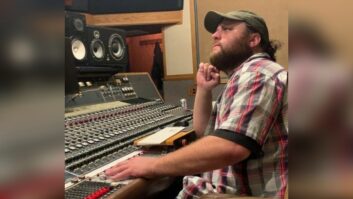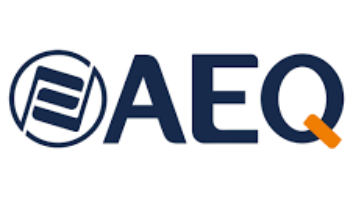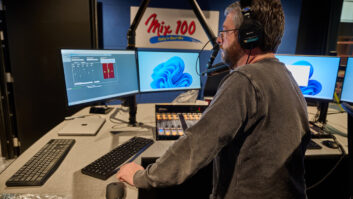Audio Codecs
Nov 1, 2000 12:00 PM, Kent Kramer
Sending audio from remote locations has never been easier
At one time, all remote broadcasts involved a long wait from thephone company while an expensive equalized circuit was engineered andinstalled. The alternative was a remote pickup (RPU) transmitter. Whilethe need for a long lead time was avoided, obtaining a clear path tothe receiver was not always possible. In some areas, finding anavailable frequency is nearly impossible. For many stations, these twooptions are still the normal way of doing things. In the past few yearsa new method has been added to the station’s bag of tricks. The codec(shortened from encoder/decoder) has opened the door to a new level ofquality for remote broadcasts, eliminating the dependence on radiolinks and special-order telephone circuits.
Whether you are a seasoned professional or new to broadcasting, thechoice of which codec to purchase should not be a snap decision. Simplypicking a specific unit because the station across town bought onemight lead to more questions than answers. Before you pick out a unit,you should be fully aware of the station’s needs. This is a good itemto discuss with your fellow department heads. You will likely find thatsales and programming have different needs for remote equipment. Moststations do several types of remotes including night clubs, cardealers, local fairs and sporting events. These all present differentchallenges and different requirements not only for the equipment, butalso for the person engineering the remote.
It is important to look at how you will use the equipment, but it isequally important to look at the rest of your facility. How will theequipment integrate into your existing remote equipment package? Willit work with your intercom system, and will there be any problems withtoo much data reduction in your audio path to the transmitter? Withseveral popular coding algorithms, care should be taken not to intermixtoo many different algorithms along the audio path. Stacking too manyalgorithms can cause degradation in the overall audio quality and cancause audible anomalies to appear in the on-air sound. On top of thedecision of how to code the audio, the method of delivering the codedaudio introduces just as many questions. ISDN and POTS (Plain OldTelephone Service) lines provide different levels of bandwidth totransport different methods of coding.
Side effects One artifact of coding audio is time delay. All methodsof coding introduce some finite amount of delay into the audio path.Some are on the order of a few milliseconds, while some coding methodsintroduce a delay long enough to make it difficult to monitor sourceaudio on the return path. Delay times approaching 0.25 seconds andlonger are possible. The station must provide a mix-minus so the localaudio and studio backhaul can be monitored.
The first question you need to answer regards cost; not only cost ofthe equipment, but the cost of doing the remote. Look at the number ofremotes per week – how much does the sales department charge? Are theyonly doing one or two live breaks per remote, or are they doing afull-music show from a night club? Does programming want or need tohave full stereo audio, along with a closed-circuit station-monitorfeed with IFB and a data port from the station LAN, available at theremote site? Does the promotions department need station program audioavailable to feed a PA system? Finally, do you have the time ormanpower to go to every remote, or do you need to use non-technicalpersonnel to operate the equipment? These answers will help determinewhat method of program delivery best suits the station’s needs.
Once the station’s needs are assessed, start looking at equipment.Usually, basic remotes will be just fine with lower bandwidth systems,while more complex remotes will require considerably more bandwidth.With more bandwidth comes more complex equipment. The more complex theequipment and the remote, the more engineering will likely need to bepresent to handle setup, teardown and equipment operation during theremote.
For basic remotes, POTS codecs offer the most overall flexibility inthe smallest package and are usually able to transmit bi-directionalmono audio up to 15kHz with a connection rate of approximately33.6kb/s. The ability to use any standard telephone line allows almostany location in the world to be remote-broadcast ready. A slowerconnection rate will provide less bandwidth in the audio channel, buteven at a slow modem connection, 8kHz of audio bandwidth is more thanacceptable for voice-grade audio.
Getting connected POTS codec setup is typically simple because thenumber of setable parameters is minimal. POTS codecs operate similar tostandard computer modems, going through a short dialing and handshakingperiod before passing audio. Many units include a small two- orthree-channel mixer that provides control over the input levels as wellas headphone outputs and a local/return monitor mix. Most well-equippedPOTS codecs can stand alone without any additional supportequipment.
Since these units operate on a standard telephone line, even themost inexperienced operator can be taught how to use it in a shorttime. It is often a greater challenge to convey the simplicity of theoperation than it is to train the operator on its use.
Higher bandwidth For more involved remotes, ISDN provides a full20kHz stereo bandwidth and bi-directional audio paths. With theproliferation of ISDN around the world, more complex remotes can bedone from more places than ever before. What once required coordinatedsatellite channels and a POTS line for cueing and IFB can now be donewith a single ISDN line. Full-stereo program audio can be shipped tothe studio at the same time that mono program mix-minus and cue audioare sent back to the remote site for the talent.
The one difficulty with ISDN over POTS lines is the amount ofexpertise involved to make it work. Orders for ISDN lines must beplaced and configured to work correctly with the chosen equipment;service profile identifier (SPID) numbers must be entered correctlyinto the equipment; and protocols must be matched between the studioand remote site for the link to work properly. One incorrectly entereddigit can cause the ISDN interface to communicate improperly with thephone company’s central office.
A benefit of ISDN is the option to use different algorithmsdepending on the type of program material. Mono voice can be carriedusing the G.722 algorithm with a 6ms delay while still providing morethan acceptable audio quality. For music remotes, MPEG-1 LayerII orLayerIII will provide better audio quality but with a longer delay.There are variations of bit rate, sampling frequency and mono or stereosettings that affect the amount of time delay. See Table 1 for acomparison of the timing differences.
Because ISDN remotes tend to be more complex, an on-site engineer isusually necessary during the remote. The high-quality audio andimbedded signalling functions make it possible to move the entirestudio outside the broadcast facility for short periods of time. SomeISDN codecs have built-in mixers and internal headphone amplifiers.Codecs without these features require additional equipment. More recentISDN codec introductions have been designed for fast and simple setupand operation.
Both styles of codec offer an auxiliary data path. The data rate isusually around 2.4kb/s to 4.8kb/s. Some units also offer virtual switchconnections. These functions can be used to remotely start events suchas a CD player or control equipment through the RS-232 port. The datapath may be used for basic text messaging between the remote site andthe studio producer, or it may be used to control a piece of equipmentsuch as an on-air telephone system.
Another growing use of ISDN is for backup studio-to-transmitterlinks. The almost instantaneous connect time after dialing and the full20kHz bandwidth stereo audio can provide a full backup to traditionalSTLs and inter-city relay links.
Multiple personalities The basic operation of POTS and ISDN codecsis the same. The transmission media (the phone lines) have verydifferent characteristics, but once a signal is digitized andcompressed, it is passed on to the modem. Some codecs have multiplepersonalities that provide additional flexibility to the user. POTS andISDN modems can be fitted into a single unit. More recently, wirelessapplications like PCS and GSM have proved to be viable methods as well.Stations faced with a variety of locations may take advantage of thisfeature.
In some cases, the extreme data reduction of a single ISDN line isnot acceptable. Classical music broadcasts are typically less forgivingwith aggressive encoding schemes. A violin can be made to sound likesomething completely different with the wrong mix encoding algorithms.In cases where higher audio quality is needed, the capacity of a singleISDN line is quickly exceeded. Some codecs allow multiple ISDN lines tobe bound together to act as a single, larger pipeline. Instead of only128kb/s capacity, 256kb/s or 384kb/s can be used with two or three ISDNlines.
Binding multiple lines for increased capacity is not something thatmost stations will routinely attempt. However, when the situation callsfor the increased bandwidth, multiple ISDN lines may be a betteralternative than fractional T-1.
When you make your codec purchase decision, keep in mind that atleast one of the units will be going on the road. It may be in thehands of both technical and non-technical personnel. All codecs arebuilt to withstand normal use, but remote equipment does not enjoy thesame delicate lifestyle that rack-mounted studio equipment does. Theattractive molded plastic case will not be very attractive once it hasbeen dropped. Equipment designed for rack mounting may not survive thesame bumps and jars once it is on the road. Be sure to include theappropriate carrying case or road hardware to protect yourinvestment.











